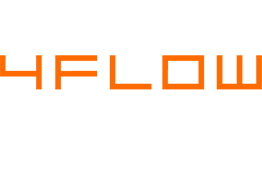SAP Architecture
Filter By
Browse By
- SAP Analytics and AI
- SAP Application Development and Integration
- All SAP Application Development and Integration
- SAP ABAP
- SAP ABAP Development Tools
- SAP ABAP Test Cockpit
- SAP API Management
- SAP BAPI
- SAP Basis
- SAP BRF
- SAP Business Application Studio
- SAP CMS
- SAP Design Studio
- SAP Development Tools
- SAP DevOps
- SAP EAI
- SAP EDI
- SAP Extension Suite
- SAP Fiori
- SAP Fiori Elements
- SAP Integration Suite
- SAP Low Code Application Development
- SAP Low Code Automation
- SAP Netweaver
- SAP Release Management
- SAP UI5
- SAP Web Application Server
- SAP Web IDE
- SAP Business Process Management
- SAP Center of Excellence
- SAP CIO
- SAP Customer Experience
- SAP Data and Data Management
- All SAP Data and Data Management
- SAP BW
- SAP BW/4HANA
- SAP Crystal Reports
- SAP Data Archiving
- SAP Data Center
- SAP Data Governance
- SAP Data Integration
- SAP Data Migration
- SAP Data Quality
- SAP Data Services
- SAP Data Strategy
- SAP Data Visualization
- SAP Data Warehouse Cloud
- SAP DMS
- SAP Document Control
- SAP EIM
- SAP ETL
- SAP ETL Tools
- SAP HANA
- SAP HANA Administration
- SAP HANA Deployment Infrastructure
- SAP HANA Studio
- SAP Master Data
- SAP Master Data Governance
- SAP MDM
- SAP Enterprise Architect
- SAP Enterprise Asset Management
- SAP ERP
- SAP Finance
- All SAP Finance
- SAP Accounting
- SAP AR AP
- SAP Asset Accounting
- SAP Billing Systems
- SAP BPC
- SAP BRIM
- SAP Cash Management
- SAP Central Finance
- SAP Controlling
- SAP COPA
- SAP Cost Center Accounting
- SAP Currency Risk
- SAP e-invoicing
- SAP FICO
- SAP Finance Automation
- SAP Advanced Financial Closing
- SAP Financial Consolidation
- SAP Financial Planning
- SAP FX Risk
- SAP General Ledger
- SAP Global Tax Management
- SAP Hyperion
- SAP Order to Cash
- SAP Payment Processing
- SAP Profitability Analysis
- SAP Rebate Management
- SAP S/4HANA Finance
- SAP SWIFT Compliance
- SAP Treasury Management
- SAP Universal Journal
- SAP Governance Risk and Compliance
- SAP Human Capital Management
- SAP Intelligent Technologies
- SAP Platform and Technology
- All SAP Platform and Technology
- SAP Business Technology Platform
- SAP Cloud
- SAP Cloud Connector
- SAP Cloud Integration Platform
- SAP Cloud Migration
- SAP Cloud Platform
- SAP Cloud Providers
- SAP Cloud Strategy
- SAP Digital Signature
- SAP Container Platform
- SAP HANA Enterprise Cloud
- SAP Digital Asset Management
- SAP Smart Forms
- SAP HEC
- SAP Digital Integration Hub
- SAP Hyperscalers
- SAP Infrastructure
- SAP Messaging
- SAP Quality and Testing
- SAP Security
- SAP Spend Management
- SAP Supply Chain Management
- All SAP Supply Chain Management
- SAP APO
- SAP Asset Management
- SAP Business Network
- SAP Digital Manufacturing Cloud
- SAP Digital Twin
- SAP EWM
- SAP IBP
- SAP Inventory Management
- SAP Label Printing
- SAP Logistics
- SAP Manufacturing
- SAP Manufacturing Automation
- SAP MES
- SAP MII
- SAP MM
- SAP MRO
- SAP MRP
- SAP Order Management
- SAP Plant Maintenance
- SAP PLM
- SAP Production Planning
- SAP S&OP
- SAP SD
- SAP SPM
- SAP Supply Chain Planning
- SAP Track and Trace
- SAP Transportation Management
- SAP System Administration
What is SAP Architecture?
SAP Architecture is the technical requirements of your system landscape and the applications that you need for that. SAP’s major step forward in architecture came when it introduced SAP R/3 — the three references a three-layer architecture — in the late 1990s. SAP ERP applications ever since, including SAP S/4HANA, still follow these basic architectural layers:
- The Presentation Layer is the component specialized in interacting with end-users, the user interface. SAP GUI is the traditional SAP interface, but newer SAP applications utilize SAP Fiori design principles.
- The Application Layer is the component that specializes in processing the SAP application — such as SAP S/4HANA. Development at the SAP application layer has been done traditionally with the ABAP coding language. The HTML5-based UI5 is growing in importance as a language for building applications that can run on a variety of devices.
- The Database Layer is the software component that specializes in the management, storage, and retrieval of data. The key difference in SAP S/4HANA vs. previous ERPs at this level is a simplified data model that is specifically designed to run on the SAP HANA in-memory database.
What is SAP Architecture?
SAP Architecture is the technical requirements of your system landscape and the applications that you need for that. SAP’s major step forward in architecture came when it introduced SAP R/3 — the three references a three-layer architecture — in the late 1990s. SAP ERP applications ever since, including SAP S/4HANA, still follow these basic architectural layers:
- The Presentation Layer is the component specialized in interacting with end-users, the user interface. SAP GUI is the traditional SAP interface, but newer SAP applications utilize SAP Fiori design principles.
- The Application Layer is the component that specializes in processing the SAP application — such as SAP S/4HANA. Development at the SAP application layer has been done traditionally with the ABAP coding language. The HTML5-based UI5 is growing in importance as a language for building applications that can run on a variety of devices.
- The Database Layer is the software component that specializes in the management, storage, and retrieval of data. The key difference in SAP S/4HANA vs. previous ERPs at this level is a simplified data model that is specifically designed to run on the SAP HANA in-memory database.
There’s a wide range of vendors that support at least part of the SAP Architecture. Red Hat and SUSE specialize in the Linux operating system, on which the SAP HANA database runs. SAP architecture needs a foundation, and a vendor such as Dell Technologies can provide on-premise hardware such as servers. Microsoft is one of the hyperscalers that can set up cloud environments for SAP applications. Companies like Deloitte offer consulting services to assist companies in building out their SAP Architecture.
Key Considerations for SAPinsiders:
- ABAP coders are still important to SAP Architecture. If your company is looking to adopt SAP S/4HANA and other SAP applications with consumer-grade user experiences, then you will likely need UI5 and SAP Fiori skillsets.
- Legacy SAP ERP systems typically have heavy customization at the application layer and potentially complex data models. Many customers that are adopting SAP S/4HANA are choosing to eschew customization and instead are adapting their processes to the technology to provide cleaner data and easier upgrades.
- SAP HANA’s in-memory capabilities are meant to speed up data retrieval significantly. However, with the rise of low-cost and open-source data storage, many companies are storing their data in “hot” and “cold” locations. Hot, or frequently accessed, data may be stored in-memory, but cold, or sporadically accessed, data may be stored in a Hadoop Distributed File System (HDFS) or cloud storage.
483 results
-

- SAP Integration Suite
 Premium
Premium
Simplifying Integration with SAP’s Integration Solution Advisory Methodology
Reading time: 6 mins
SAP follows a comprehensive integration principle, which includes the Integration Solution Advisory Methodology (ISA-M) to assist enterprise architects in defining and documenting their integration strategy. ISA-M comprises a collection of integration use case patterns that are not tied to any specific technology and can be mapped to integration technologies according to each customer's context. This…
-

- SAP Business Application Studio
 Premium
Premium
Set Up Intuitive and Automated Reporting Functionality with Crystal Reports
Reading time: 17 mins
Discover a strategy for configuring and developing Crystal Reports for your organization’s SAP BusinessObjects GRC solutions, such as SAP BusinessObjects Process Control. Walk through key installation requirements and configuration steps for your SAP BusinessObjects GRC solutions related to the SAP BusinessObjects Enterprise server, and identify key configuration settings that need to be put into place....…
-

- SAP Human Capital Management
 Premium
Premium
SAP and SuccessFactors – An Overview
Reading time: 70 mins
In this exclusive in-depth report, learn about SuccessFactors and what the acquisition means for SAP ERP HCM and your business. Get a detailed, comprehensive overview of SuccessFactors, SAP’s strategy, the future of SAP ERP HCM, and how the acquisition of SuccessFactors affects your business. It aims to dispel any myths or confusion around SuccessFactors and...…
-
-

- SAP Cloud Migration
 Premium
Premium
Practical Steps for Setting Up an SAP BI on SAP HANA Infrastructure in the Cloud
Reading time: 12 mins
Discover options for implementing the SAP BI powered by SAP HANA platform in the cloud. Learn tips and ideas for efficient ways of setting up a cloud infrastructure for SAP BW on HANA, SAP BusinessObjects, and BusinessObjects Data Services (BODS). Key Concept By using Dynamic Tiering to place hot data in SAP HANA in-memory tables,...…
-

- SAP HANA Enterprise Cloud
 Premium
Premium
How to Design the Architecture and Develop an IoT Application on SAP HANA Cloud Platform
Reading time: 9 mins
Learn how to develop an Internet of Things (IoT) application that fetches data from a sensor and saves it on an SAP HANA database on SAP HANA Cloud Platform. Key Concept SAP HANA Cloud Platform is a platform for extending, integrating, and building new applications. It provides design templates and prebuilt applications that have responsive...…
-

Technical Guide: Overview for Migration to SAP BW/4HANA
Reading time: 12 mins
Learn about SAP BW/4HANA and considerations to evaluate when making the decision to migrate. Understand how the effort of implementing SAP HANA-based enterprise data warehousing empowers companies, leads to greater returns, and reduces total cost of ownership. Key Concept As the pace of change increases, the ability to create analytic solutions quickly and effectively can…
-

- SAP Billing Systems
 Premium
Premium
Sabre Turns an Architecture Challenge into a Success Story for Billing
Reading time: 8 mins
Processing $2 billion through its billing system and $120 billion of global travel spend annually, travel technology company Sabre needed a sophisticated and failure-proof software system. The business turned to SAP HANA Enterprise Edition to handle its complex requirements. The Sabre team worked with SAP to implement this solution, and as a result, has since…
-
-

- SAP Analytics and AI
 Premium
Premium
Modernizing SAP Analytics Architecture During an S/4HANA Transition
Reading time: 2 mins
Many companies are upgrading their SAP Analytics architectures due to SAP's upcoming end of mainstream maintenance and the need for analytics investment to support S/4HANA upgrades. The evolving analytics market offers features beyond traditional environments, leading to confusion about the optimal SAP Analytics landscape. Some organizations modernize using non-SAP environments, gaining new capabilities but losing…
-

- SAP Netweaver
 Premium
Premium
SAP BusinessObjects Planning and Consolidation for SAP NetWeaver or Microsoft: How They Differ
Reading time: 21 mins
Compare the SAP BusinessObjects Planning and Consolidation, version for Microsoft and the SAP BusinessObjects Planning and Consolidation, version for SAP NetWeaver environments, and examine the strategies associated with this technology. Review the concept of the platform as the main issue behind a company’s reason for implementing one of these versions because of data integration issues,...…
-

 Premium
Premium
5-Step Roadmap to a Sound SAP xMII Deployment
Reading time: 40 mins
This five-step roadmap helps you understand what you need to do to implement SAP xApp Manufacturing Integration and Intelligence, build an effective team, and establish a rapid deployment model that you can repeat and enhance after every deployment. Key Concept An SAP xApp Manufacturing Integration and Intelligence (xMII) implementation involves functional synchronization and reengineering of...…
Become a Member
Unlimited access to thousands of resources for SAP-specific expertise that can only be found here.
Become a Partner
Access exclusive SAP insights, expert marketing strategies, and high-value services including research reports, webinars, and buyers' guides, all designed to boost your campaign ROI by up to 50% within the SAP ecosystem.
Upcoming Events
Related Vendors
Your request has been successfully sent


